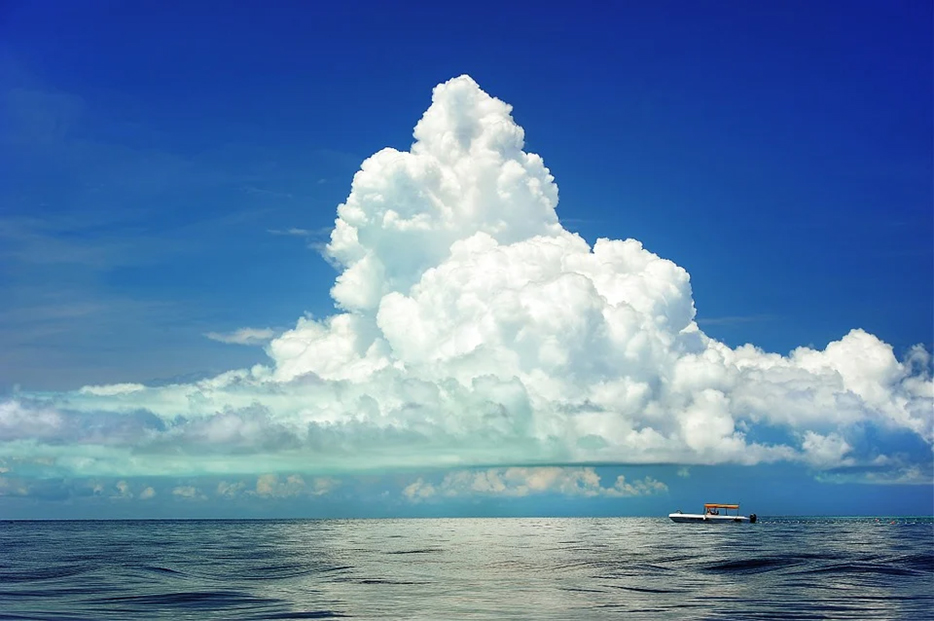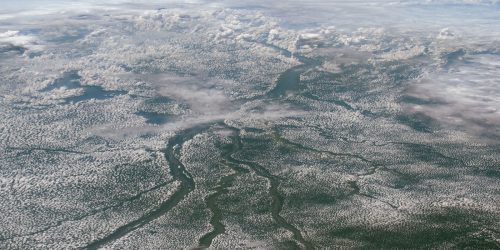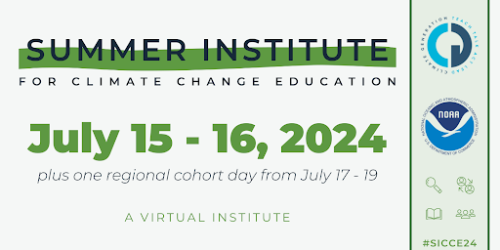NOAA’s Climate Variability and Predictability (CVP) Program is announcing ten new three-year projects in FY20 that aim to identify the state, mechanisms, and sources of climate predictability on the interannual to decadal timescale. This research will lead to future improvements in skillful decadal prediction systems for climate—ocean and atmosphere. The competitively selected projects total $6.78 million, including $6.22 million in grants and $556,000 in other awards.

Recent research findings confirm that the ocean is the primary driver of climate variability on the decadal to multi-decadal timescales. It is critical that we quantify the mechanistic relationships between ocean and atmosphere so that we can better describe these variations, how strongly they interact, and how well our models perform at simulating them.
There is ongoing national and international research interest in decadal variability and predictability and the role of the ocean. For example, the World Climate Research Programme’s (WCRP’s) International CLIVAR has a specific community-driven Research Foci to address specific science questions related to decadal climate variability and predictability (DCVP Working Group). U.S. CLIVAR also supports an interagency-funded U.S. Atlantic Meridional Overturning Circulation (AMOC) Science Team, which focuses on the role of the Atlantic Ocean circulation in ocean and climate variability. The recent 2018 U.S. AMOC Report on Progress and Priorities identified several near- and long-term priorities for ongoing research.
To build on this work, CVP solicited projects in data analysis and/or modeling studies focused on the state and understanding of process in the ocean and atmosphere on interannual to multi-decadal timescales in the following two priority areas:
- Investigation of mechanisms that govern variability of the ocean-climate system and its predictability on interannual to multi-decadal timescales within long-term observation data and/or modeling data, such as CMIP6, with a focus on either the Atlantic or Pacific Ocean region.
- Investigation of the relationship between the Atlantic Meridional Overturning Circulation (AMOC) and global and regional sea level (historical, current, and/or future), with a focus on understanding coastal impacts and sea level extremes in the United States, for the improved understanding of the ocean-climate system.
The ten new projects funded by the CVP Program in FY20 are:
- What sets the predictability timescales of SST and upper-ocean heat content in the Atlantic and Pacific basins?
This project will determine the processes that set predictability timescales for sea surface temperatures and upper-ocean heat content in the Atlantic and Pacific basins and ascertain how well these processes are represented in models. Results will indicate to model developers which regions and processes need to be improved to better predict decadal climate variability.- PI: Martha Buckley, George Mason University
- Co-PI(s): Laure Zanna, New York University
- Mechanisms of interannual- to decadal-scale predictability for ocean physics and biogeochemistry in the California Current System
This project will quantify the predictability of the physical and biogeochemical California Current System variability on interannual to decadal timescales, to understand the physical mechanisms that drive predictability. The project will alsoevaluate the ability of current decadal forecast systems to realize that predictability as forecast skill. Comparison of this predictability with realized forecast skill in modern decadal predictions allows for the identification of key limitations on forecast skill and areas where predictability in the ecosystem can be exploited to improve skill.- PI: Mercedes Pozo Buil, University of California Santa Cruz
- Co-PI(s): Nicole Lovenduski, University of Colorado Boulder; Emanuele Di Lorenzo, Georgia Institute of Technology; Michael Jacox, Steven Bograd, and Elliott Hazen, NOAA Southwest Fisheries Science Center
- Oceanic mechanisms of tropical Pacific climate variability involving the Subtropical-Tropical Cells (STCs)
Tropical Pacific decadal variability (TPDV) plays an important role in the global climate; however, there is not yet a clear understanding of TPDV’s underlying mechanisms. This project will explain the role of oceanic dynamical processes in TPDV using a combination of observations, oceanic, and coupled atmosphere-ocean reanalysis products, and model outputs from CMIP6.- PI: Antonietta Capotondi, NOAA Physical Sciences Laboratory
- Co-PI(s): Prashant D. Sardeshmukh, NOAA Physical Sciences Laboratory
- Investigating the connection between the Atlantic Meridional Overturning Circulation (AMOC) and the northwest Atlantic coastal sea level: Connecting the dots across the shelf break
The relationship between accelerated sea level rise and the Atlantic Meridional Circulation (AMOC) relies on a cross-continental-shelf connection that is the least understood aspect in any suggested mechanisms linking coastal sea level variability to the AMOC changes. This project will analyze the AMOC variations on various time scales to identify and understand key cross-shelf processes and mechanisms that are important in connecting the AMOC and coastal sea level variability. The outcomes of this project will allow for further development of predictive skills for coastal sea level changes as well as improvements of climate models in their representations of coastal processes.- PI: Ke Chen, Woods Hole Oceanographic Institution
- Co-PI(s): Jiayan Yang, Woods Hole Oceanographic Institution; Jian Zhao, University of Maryland Center for Environmental Science
- Examining the causes of trends in the context of a variable subpolar North Atlantic Ocean
This project will address the causes of the cooling trend in sea surface temperature in the subpolar North Atlantic by testing causes of the trend itself as well as examining fluctuations in the trend using a combination of CESM model hierarchy, CMIP6 data, and observations. The resulting improved process-level understanding will lead to greater confidence in the ability to predict future changes in the North Atlantic and their impacts.- PI: Amy Clement, University of Miami
- Co-PI(s): Benjamin Kirtman, University of Miami; Mark Cane, Columbia University
- Advancing decadal predictions by optimally detecting differences in causal relations
This project will test the consistency of a suite of CMIP5/6 models and observations using a comprehensive, multivariate framework, and then construct a multi-model prediction system based on the subset of models whose internal predictability and climate change signals are consistent with observations. The multi-model prediction system will then be used to derive empirical prediction models used to make multi-year predictions of Atlantic and Pacific sea surface temperatures.- PI: Timothy DelSole, George Mason University
- Co-PI(s): Michael K. Tippett, Columbia University
- Assessing and understanding Atlantic multidecadal variability in a suite of GFDL climate models: roles of climate feedback and teleconnection
This project will study the mechanism of the Atlantic Multidecadal Variability (AMV) in a suite of NOAA’s Geophysical Fluid Dynamics Lab (GFDL) climate models using a combined statistical and dynamic approach, with focus on the roles of climate feedback and oceanic teleconnections. This work will be coordinated closely with the ongoing modeling activity at GFDL and forms a part of a comprehensive research strategy at GFDL on decadal climate variability and predictability, including decadal climate prediction and global warming research.- PI: Zhengyu Liu, The Ohio State University
- Co-PI(s): Thomas L. Delworth, NOAA GFDL
- The interplay between sea level and Atlantic Meridional Overturning Circulation: cause and effect relationships, predictability, and coastal implications
This project focuses on understanding how the large-scale sea level patterns influenced by the Meridional Overturning Circulation (MOC) may affect coastal sea level in the Atlantic Ocean and the U.S. East Coast. The goal is to identify the leading modes of variability and then quantitatively evaluate the causal mechanisms of regional seal level and heat content variability, as well as change in the Atlantic MOC.- PI: Denis Volkov, University of Miami
- Co-PI(s): Marlos Goes, University of Miami Cooperative Institute for Marine & Atmospheric Studies; Hong Zhang, UCLA
- Understanding the relative roles of Atlantic vs. Pacific coupled dynamics in initialized decadal predictions
This project will advance decadal prediction science by deepening our understanding of the regionally-dependent coupled dynamics at work in the Atlantic and Pacific in initialized decadal prediction ensembles using full-complexity coupled general circulation models. The models will be analyzed with the goal of developing improved mechanistic understanding of the origins of skill in interannual-to-decadal predictions.- PI: Stephen Yeager, University Corporation for Atmospheric Research, National Center for Atmospheric Research
- Co-PI(s): Gokhan Danabasoglu and Elizabeth Maroon, University Corporation for Atmospheric Research, National Center for Atmospheric Research; Ping Chang, Texas A&M University; Wei Cheng, University of Washington
- Drivers of coastal sea level change Along the Eastern United States
This project will identify how atmospheric and oceanic drivers and their representation in climate models impact coastal sea level projections using state-of-the-art coupled climate models of different ocean and atmosphere horizontal resolutions from NOAA’s Geophysical Fluid Dynamics Lab. This work will help to guide future model developments by providing robust model diagnostics and observation-based metrics from which to assess climate simulations. In addition, this innovative analysis in realistic coupled climate models at eddying resolution enables the mapping of risks of sea level changes to time-dependent dynamical drivers vs. time-independent geographical (e.g., bathymetry) drivers.- PI: Laure Zanna, New York University
- Co-PI(s): Jianjun Yin, University of Arizona; Stephen M. Griffies and Ming Zhao, NOAA GFDL









